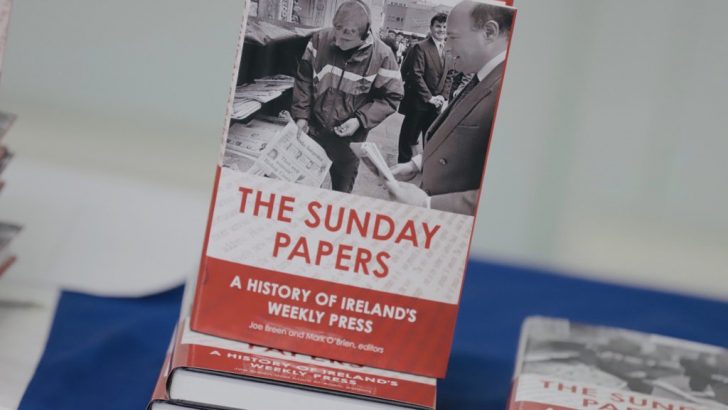The Sunday Papers. A History of Ireland’s Weekly Press
edited by Joe Breen and Mark O’Brien (Four Courts Press, €55.00)
Joe Carroll
This is a welcome scrutiny of Irish Sunday newspapers. It covers the whole of the last century and the first decade of this and, as the editors point out, shows how these weekly newspapers reflected the changing Ireland of those times. Had they a role in shaping some of those social changes?
The readers will have to judge that for themselves.
The guardians of the country’s morals in the newly independent Ireland certainly feared that the thousands of British papers for sale outside church gates on Sundays were often an evil influence and the usually salacious News of the World was banned for good in the 1930s.
It seems hard to believe now that for almost 50 years the only Irish Sunday newspaper was the Sunday Independent until the Sunday Press appeared in 1949. It was a huge success and soon reached a circulation of over 400,000, but its Abbey Street rival was not too far behind showing that there was a huge market for Sunday papers among a population of less than three million. In addition the British weeklies had total sales of over 350,000.
Clearly Sunday was not Sunday without a favourite paper and many were reading two or more.
Market
The book traces the expansion of Irish Sunday papers as the economy expanded. The Irish Times entered the market in 1957 with the tabloid Sunday Review, a strange choice for the conservative, largely Protestant daily.
Joe Breen gives a lively account of this largely forgotten newspaper which struggled from the start, but helped to enlarge political coverage under the editorships of John Healy and Ted Nealon through the “Backbencher” column.
The loss-making Review ceased in 1963 and it was not until 1973 that a new tabloid appeared in the form of the Sunday World.
Sex and sensationalism which worked so well for the British tabloids were here on display but toned down for Irish consumption. The paper was an instant success and is still in existence today, but now owned by Independent Newspapers.
The essay on the tabloid shows that it also has a social conscience and investigated dark areas of Irish life that the other papers ignored.
The turbulent history of the Sunday Tribune between 1980 and 2011 shows how quality in news reporting and features does not guarantee commercial success. It will always be associated with Vincent Browne, although he was editor for only 11 of its 31 years. Its later years were marked by financial dependence on the Independent group which had a sufficient shareholding to scare off any other investors.
The brief unhappy life of the Sunday Journal (how many remember it?) makes for sad reading as what started as a brave effort by dedicated journalists to compete with the Farmer’s Journal ended up disastrously in the grip of Joe Moore and his ill-fated PMPA motor insurance business.
But a more successful effort by enterprising journalists to break away from the domination of the Sunday market by the Independent and Press groups was the start-up of the Sunday Business Post in 1989.
Ed Mulhall gives a fascinating account of the first decade of the weekly as it exploited a niche in the Sunday market by concentrating on economic and financial coverage as the Celtic Tiger started to roar. Its fortunes declined as part of the Cork Examiner group, but the paper survived examinership and continues to publish.
Perhaps the most interesting chapter is the account by Ed Mulhall of the Sunday Independent under the editorship of Aengus Fanning from 1984 to his premature death in 2012. Under Fanning and his deputy and successor Anne Harris, the paper soared in circulation and dominated the Sunday market, but at a price according to Kevin Rafter.
Fanning described his paper as “a lightning rod for the anger and frustration that is out there”. Another journalist observed that on its pages ”the nation’s sacred cows were butchered with gleeful ferocity [as] targets were relentlessly singled out for vulgar abuse”.
Ed Mulhall himself comments that the manner in which issues and individuals featured on its pages “frequently ranged well over generally accepted legal and taste lines”.
One has only to recall how it reported the Bishop Casey fall, the death of Liam Lawlor in a car accident in Moscow, and how John Hume was regularly pilloried for negotiating a Northern Ireland peace process with Sinn Féin. Terry Keane’s revelation of her longterm affair with Charlie Haughey drove the circulation to record heights.
Hands up those who did not buy it that Sunday!



